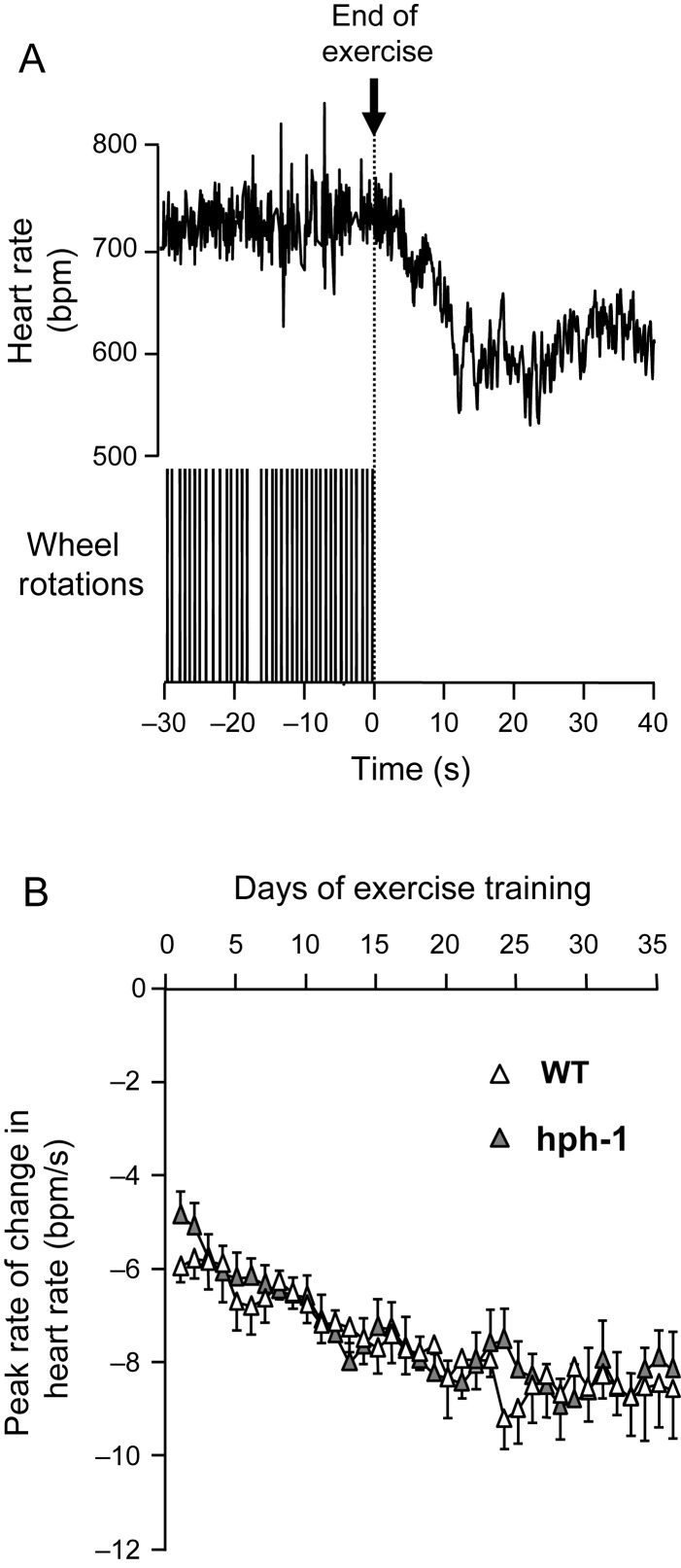Figure 3.
Normal heart rate recovery following voluntary exercise bouts in telemetered hph-1 mice. (A) Typical heart rate recording in a WT mouse at the end of a bout of voluntary exercise. Changes in exercise state were associated with an extremely rapid change in heart rate that is complete within 20 s. Wheel rotations are shown as blocks of individual wheel rotation spikes that are not individually resolved on the time scale shown. (B) Effects of exercise training on heart rate recovery. There was no difference in heart rate responsiveness between the WT and hph-1 mouse (n = 7). Exercise training was associated with increased heart rate recovery at the end of exercise measured using the peak rate of change in heart rate (peak rate of change in heart rate in WT mice: days 1–7: 6.2 ± 0.5, days 21–35: 8.5 ± 0.6, P = 0.001; in hph-1 mice: days 1–7: 6.0 ± 0.4, days 21–35: 8.5 ± 0.4, P < 0.0001). The effects of exercise training on heart rate recovery were not different in WT and hph-1 mice.

